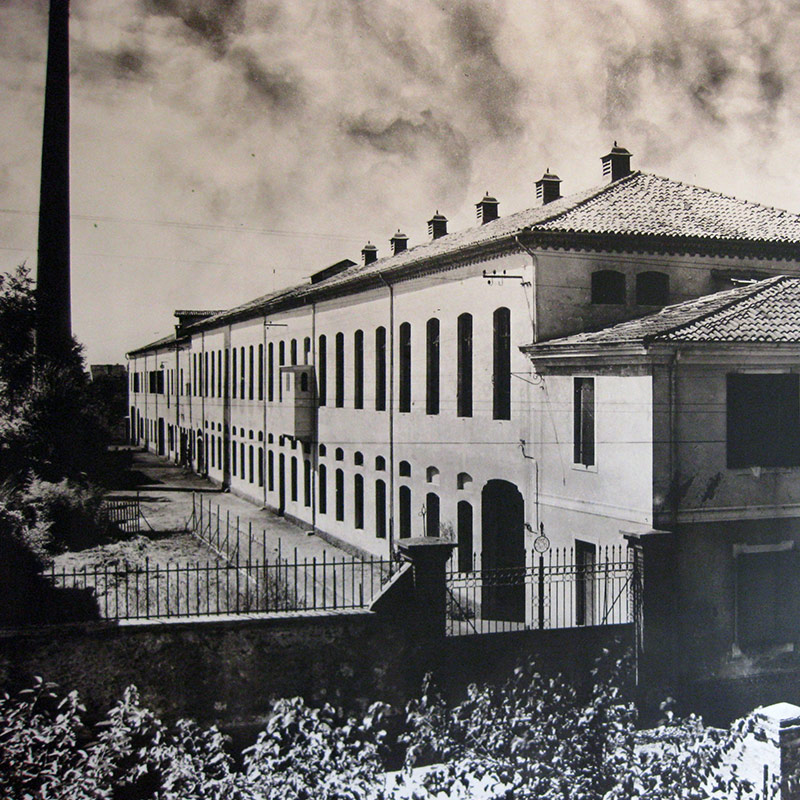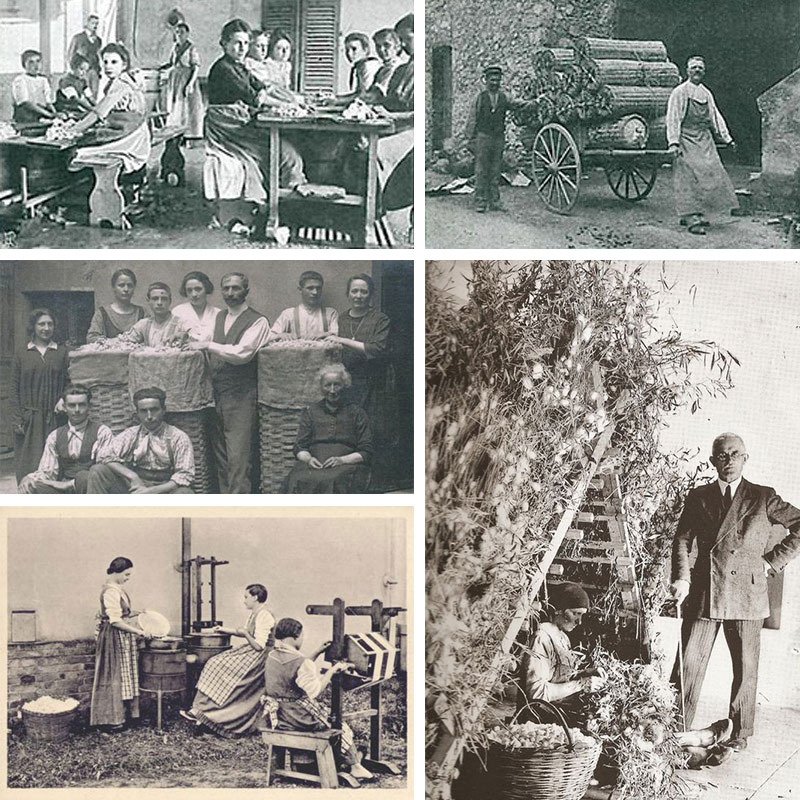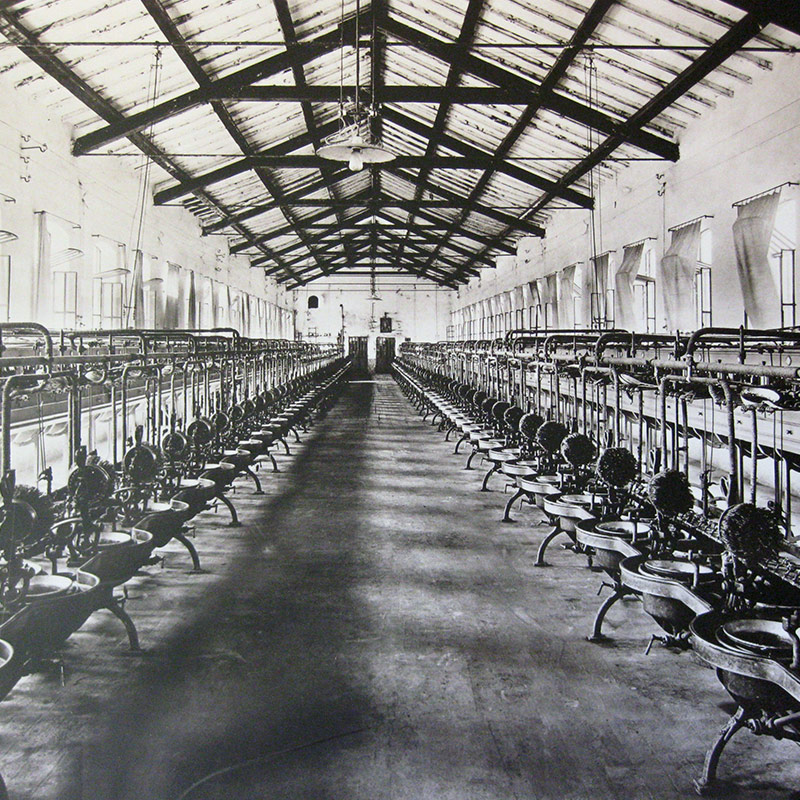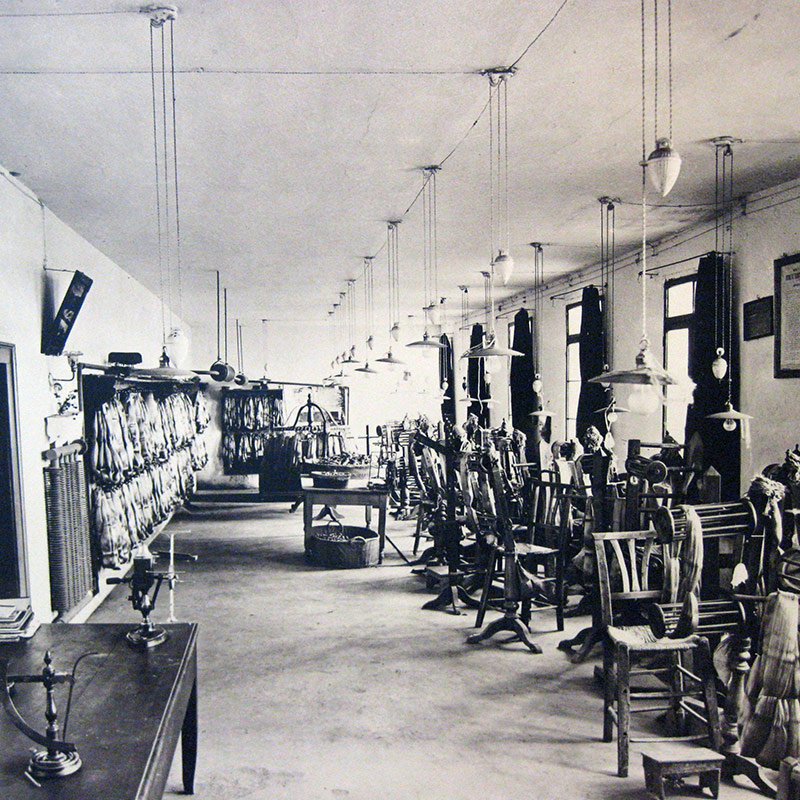Industrial archeology
The chimney, the ancient furnace, historical photographs, and the Hotel’s furniture bear witness to a fascinating piece of history, a fundamental step in the industrial and social development of the territory, as well as its landscape.
Imagine an ancient factory where young women worked, every day, to produce precious silk: between the Nineteenth and Twentieth centuries, the Hotel was a silk factory where farmers brought silkworm cocoons, destined to be transformed into yarn thanks to the manual skills of the workers.
Even today, you can still feel the industrial origin of this place, guardian of an ancient and now vanished craft.
The birth of silk factories
Silkworm breeding was very common at the time, and the silk processing reached such high quality levels that it marked the transition from a predominantly agricultural economy to a more industrial one. In the first half of the Nineteenth century, silk factories in our territory consisted of domestic workshops, the work was seasonal and lasted for a maximum of three months per year inside makeshift premises.
By the end of the Nineteenth century, the introduction of machinery, powered by steam from coal-fired boilers, transformed a domestic, agricultural craft into a proper industrial activity. The search for new and more resistant silkworms begins, leading to the establishment of the first public sericulture institutes, which study procedures and processes aimed at increasing production and improving product quality. The Experimental Sericulture Station was born in Padua.
Cittadella and the Franceschetto silk factory
During World War I, three silk factories are operational in Cittadella, employing a total of approximately 385 people, of whom only about 10 are males. The majority of the workers are young women who begin to obtain organized and regulated employment.
The structure converted into a hotel is the former Franceschetto silk factory. Undoubtedly, it was the most relevant: in addition to the spinning mills, it was equipped with a line of looms for weaving, that remained operational until the 1960s. The factory was powered by a 2 hp steam engine and featured a dining hall, a dormitory, four latrines (bathrooms), and a room for breastfeeding.
At the beginning of the Great War, the total workforce of the plant consisted of 114 employees, almost exclusively female, many of whom were under 15 years of age.
The Franceschetto silk factory is the most recognizable for having preserved its architecture intact, starting from the chimney that still stands out in the sky of Cittadella.
To recall the ancient vocation of this building, at the entrance there is still a basin where three women used to brush and separate the cocoons, find the end of the thread, make a knot, pass it through the glass tube, and wind it onto the spinning wheel.












